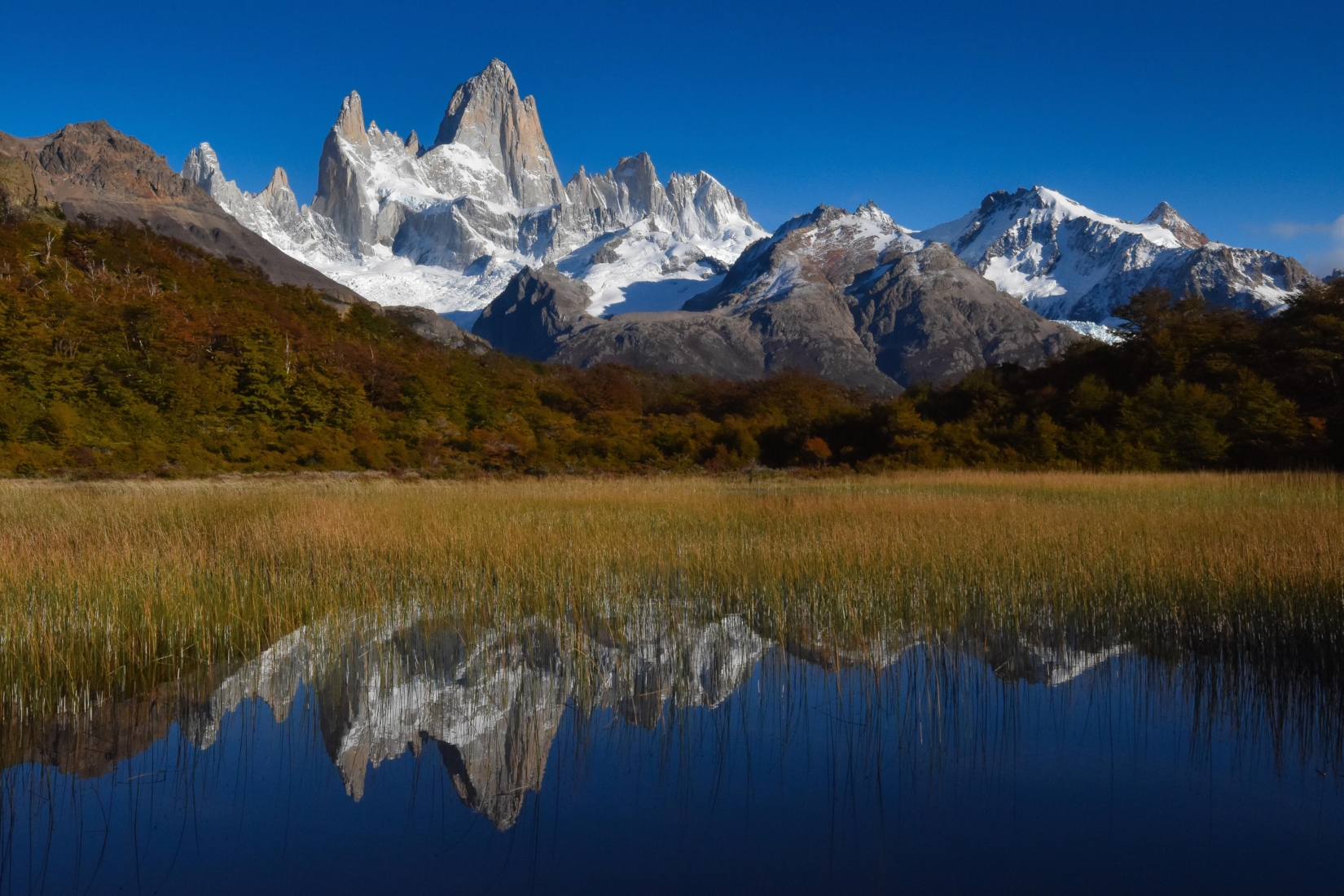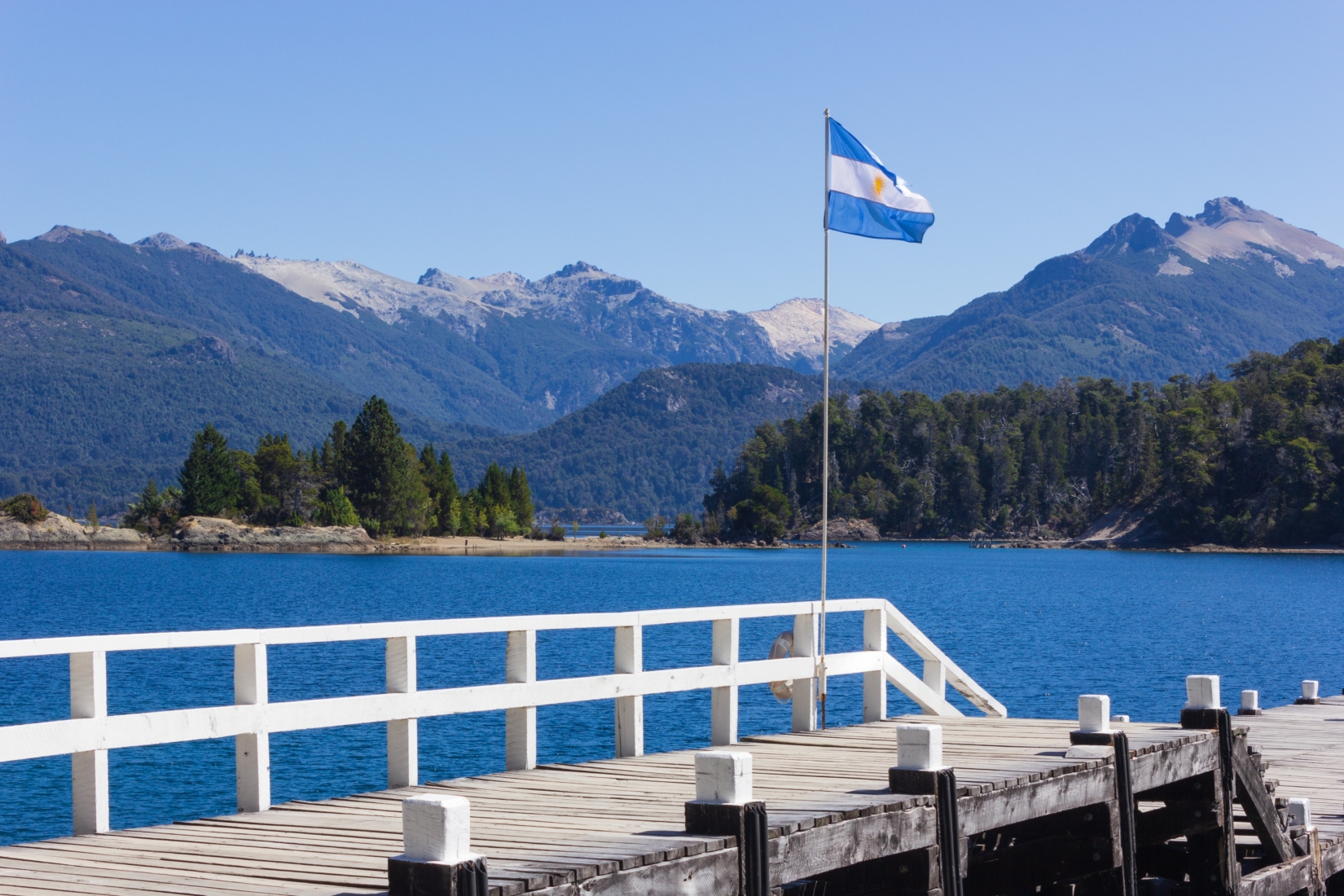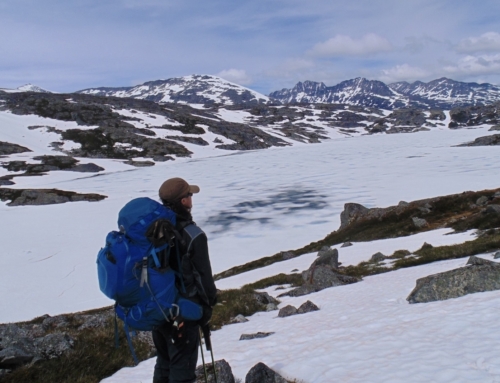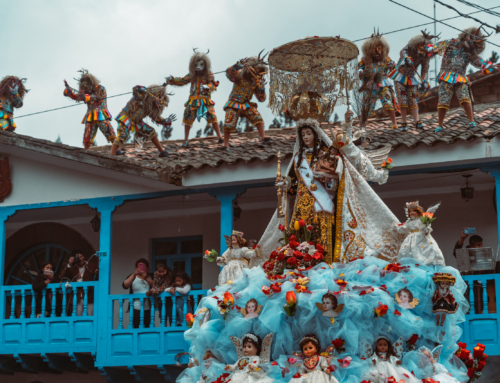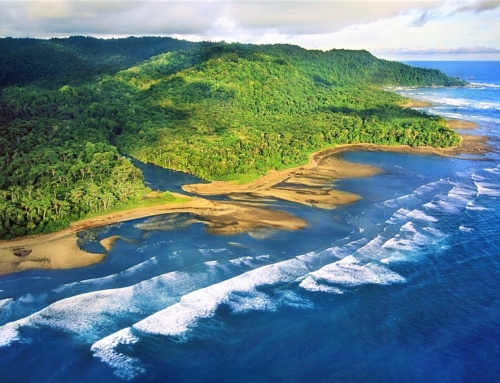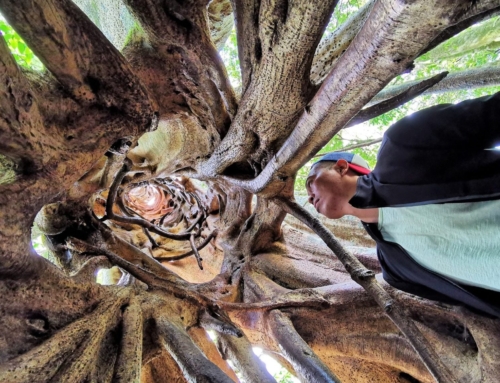What I Wish I Knew Before Visiting Argentine Patagonia
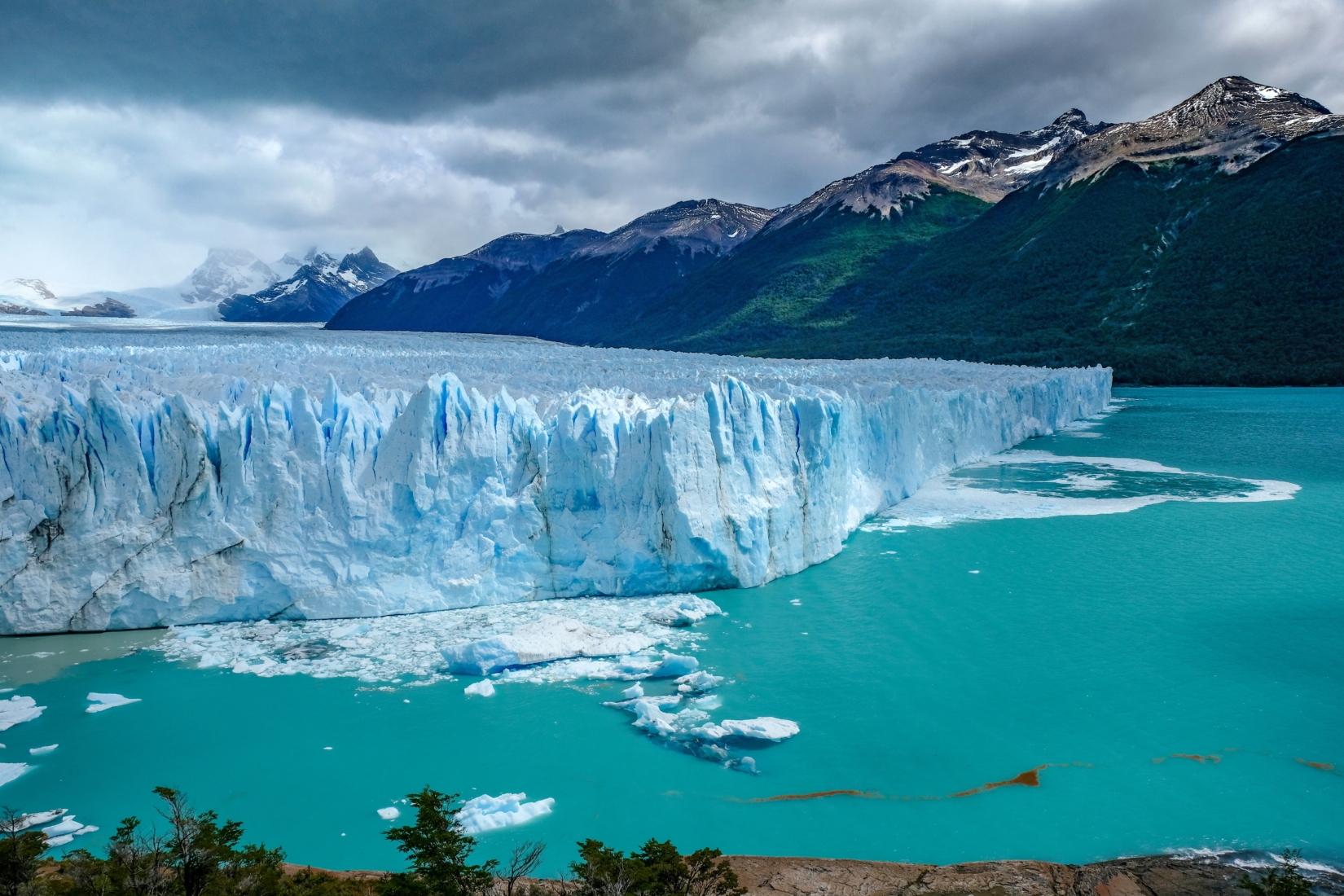
Argentine Patagonia is a land of true extremes, of sights and sweeping vistas that you need to see to believe. Here, the mountain tops of the Fitz Roy skewer the clouds. There, the rolling pampas are dotted with sheep farms. Suddenly, killer whales splash through the oceans. Then, a colossal ice sheet fragments from the Andean glaciers on high. If we could design a region for adventure travelers, it really would look something like Argentinian Patagonia!
This ultimate guide to Argentine Patagonia offers a look at this amazing corner of South America. It ranges from an introduction of the lake district of Bariloche and the penguin-spotted channels of Tierra del Fuego to advice on the best activities and must-see attractions in Patagonia and what to pack for your trip. We’ll also cover details about the best times to visit, what the weather is like, and the practicalities of getting there. Let’s jump into it!
Inside this Guide
- My experience in Argentine Patagonia
- Where is Argentinian Patagonia?
- How to get there
- When is the best time to visit?
- What to pack for Argentine Patagonia
- Top travel destinations while visiting Argentinian Patagonia
- Must-see attractions in Argentinian Patagonia
- Top hikes in Argentinian Patagonia
My experience in Argentine Patagonia
Just a mention of the name Patagonia is always enough to get the hairs standing on the back of my neck. And if you ask me about the Argentinian part of that great wilderness, I begin to recall images of the jagged Fitz Roy, the ice-shaking Perito Moreno Glacier, the dramatic landscape of Tierra del Fuego, and the inky lakes of Bariloche.
I’ve now trekked and traversed these lands and wonders extensively. But the former sense of majesty and mystique that visiting Argentinian Patagonia inspired has never fully left me. Whenever I pack the crampons and lace the boots for a trip to this frontier of South America, I fizz with a mix of excitement, joy, and apprehension, all fueled by the prospect of returning to what I now know to be unquestionably one of the most savage, yet sublime, parts of the planet.
The magic of destinations like Patagonia helped me to make a career out of travel. I’m so fortunate to have founded The Explorer’s Passage, the world’s premier adventure travel company. We pride ourselves in assisting travelers to experience the most unique corners of the planet through meticulously executed trips. Join us for a jaunt to Argentina and rest assured we’ll take care of all the details so you can enjoy your trip in the most intimate, exhilarating ways possible.
Where is Argentinian Patagonia?
Argentinian Patagonia is a seriously vast region. It encompasses more than a quarter of the latitudes of South America as a whole, running just shy of 1,000 miles (1,609 km) from the winding Rio Negro (generally accepted to be its northern border) to the fragmented isles of Tierra del Fuego on the cusp of Cape Horn.
The greater region of Patagonia is shared between Argentina and Chile. The land area of both is similar from north to south but the Chilean side is nowhere near as wide. It encompasses a long run of the snow-capped Andes and a sliver of coastal plains before bending into the Magellan Strait. The Argentine side, meanwhile, hits nearly 500 miles (805 km) at its widest point, rolling from alpine lakes and glaciers to barren pampas and steppes. If you’re also interested in exploring the Chilean side of Patagonia, check out our W Trek Adventure!
The extreme far Southern Patagonia is a fragment of the Isla Grande de Tierra del Fuego. That, in turn, is entirely separated from the Argentina mainland, sharing a sole land border with Chilean Patagonia to the west. There are also a number of offshore territories that belong to the region, including the seal-spotted Isla de los Estados, which is considered to be the very end of the Andes mountain chain within southern Patagonia
How to get there
As you might imagine, getting to Argentine Patagonia, this far-flung corner of South America, isn’t as simple as jetting into Buenos Aires for a night in the tango halls. But it’s also not super difficult. The reason? Flights. While the majority of international links into Argentina still head straight to the capital’s Ministro Pistarini International Airport (also known as Ezeiza International Airport), there are plenty of domestic connections that help you make the hop – and it’s still a hefty hop, mind you – into Patagonia.
The most popular air route services to get to Argentinian Patagonia from Buenos Aires are the ones that go direct to El Calafate (taking just over 3 hours) and to the stunning mountain resort of Bariloche (taking 2.5 hours). You can also go straight to Ushuaia, the most southerly city in the world, in as little as 3.5 hours.
Prefer traveling via land? Don’t worry – the old-school way of getting to southern Patagonia is still very much alive. Buses link to Bariloche from Buenos Aires in around a full day’s travel, though the ride is a real adventure going straight across the heart of the country, providing nice views while getting to Argentine Patagonia.
There are others that make the long road trip down the iconic Ruta 40 (one of South America’s most breathtaking highways) from Bariloche to the trekking hub of El Chaltén, usually taking upwards of 25 hours in all, providing amazing views and scenery as you travel to Patagonia.
When is the best time to visit?
It’s hard to predict what the weather will be like in regions like Patagonia that sit at the very ends of the Earth. However, there is a clear four-season pattern that can offer some insights into the sort of conditions you can expect during certain months to give you a good idea of what to pack according to the time of your trip to Argentine Patagonia. Let’s take a closer look…
- Winter (June to August) – Winter can be harsh in this extremity of the continent. Down in Ushuaia, it’s possible to see thermometers ebb to around 20°F (-7°C), but most days it’s between 30 to 50°F (-1 to 10°C). It will get warmer as you head north, but the Andes create huge snow systems that can cover the major hiking hubs of El Calafate and El Chaltén.
Trails don’t completely close per se, but it’s virtually impossible to complete the longer routes while touring Argentinian Patagonia at this time of year. At best, you’ll be looking at short day hikes and will need to be wary of changeable conditions. The real upshot of traveling here in the winter is the excellent skiing. Bariloche is the center of that, with a season that typically runs from April to October.
- Spring (September to November) – Spring is a time of serious transition that can mean hefty temperature fluctuations in the Andes. Those hitting the walking hubs around Fitz Roy might get wildflower displays and milder winds than in the summer, but layering is key while visiting Argentinian Patagonia during this time of the year as below-freezing nights follow positively balmy, sun-drenched days in the 60°F (15 to 20°C) range.
However, rainfall does ease off, getting to a yearly low of just over 1.5 inches (40 mm) in El Chaltén in November, making this the start of a few good months to consider visiting. What’s more, spring is prime time for whale watching on the rugged Argentinian Atlantic coast or enjoying beautiful scenery in the Argentine lake district.
- Summer (December to February) – Often seen as the runaway best time to come trekking in Patagonia, the summer is about clear, dry days and cool nights. Temperatures in the main hiking areas tend to hover around the 60s and low 70s (15 to 22°C), but stay closer to 55°F (13°C) in Ushuaia. December sees the annual peak for sunshine hours, providing exceptional weather for touring and exploring all of the must-see attractions that Argentine Patagonia has to offer.
Rainfall tends to be lower towards the start of the season, sticking to 2 inches (50 mm) in December. All that means is the trails of El Chaltén are in fine condition and the glacier face at Perito Moreno is most likely to showcase its incredible calving process. The downside? The prices are higher and there are always crowds around, not to mention the winds from the west can be very strong. For these reasons, not everyone agrees that these popular months are the best time to visit.
- Fall (March to May) – The fall months are the wettest across the whole region which must be considered when planning your trip and what to pack for Argentine Patagonia. Take El Chaltén for example, precipitation levels there can be almost double in April than they are in September. The weather in Patagonia naturally has an adverse effect on the quality of the trails and the views – rains mean clouds and clouds can mean bad photos.
But all is not lost. It doesn’t rain all the time during the autumn and when it clears, you’ll be able to see the ochre, orange, and red changing of the forests in the subalpine zones. Plus, there tend to be way fewer trekkers around at this time, helping to cut prices and up that feeling of total seclusion during your visit to Argentine Patagonia.
What to pack for Argentine Patagonia
As previously mentioned, the weather in Argentine Patagonia can be very unpredictable with temperatures ranging from 20 to 70°F (-7 to 22°C) depending on the time of year you decide to visit. Plus, rain and snow are also fairly common in this region, so it is important to bring along waterproof outerwear and trekking boots to keep dry while touring or trekking in these parts. Your best bet for packing for Argentine Patagonia is to layer up and be prepared to shed a few layers as the day gets warmer and your body heats up while trekking.
Aside from considering the ranging temperatures and weather in Argentine Patagonia, it is also important to take into account the sunny days while packing for your trip. A good pair of polarized sunglasses and plenty of sunscreen will be your best friend to protect against blinding sun rays reflecting off of ice, snow, and water in this region. This will be especially helpful when you spend hours in direct sunlight while trekking.
Below you’ll find a basic list of the essential items we recommend you bring while visiting Patagonia.
- Trekking boots (waterproof)
- Warm socks
- Long thermal underwear, shirts, and pants
- Light fleece jacket
- Protective outer-layer jacket (waterproof)
- Rain pants
- Gloves
- Hat
- Sunglasses
- Sunscreen and insect repellent
- Quick dry towel
- Trekking backpack
Additionally, we’ve got a more general guide for what to pack in your daypack while trekking if you just don’t know where to start!
Top travel destinations while visiting Argentinian Patagonia
Patagonia isn’t just one destination. It’s hundreds. They’re all wedged into this 400,000-square mile (1,036,000-sq km) block of South America, ranging from the spiked Andean peaks to wave-lashed shorelines. Some of the most enticing places of the lot are located on Argentina’s side of the border, too.
Here are some of our top picks for cities and towns to visit:
- El Chaltén – They call El Chaltén the “National Capital of Trekking in Argentina.” The town, a ramshackle and surprising mix of backpacker hostels and sleek mountain spas, sits at the foot of the great Fitz Roy massif, attracting many travelers seeking to knock “trekking in Patagonia” off their bucket list.
Look west and you’ll see the toothed tops of what some consider to be the most incredible part of the Andes, rising 11,170 feet (3,405 m) above sea level. There are trails galore, from the 11.8-mile (19-km) romp to the Laguna Torre to the soaring panoramic Pliegue Tumbado walk, allowing for anyone to find a hike in Argentinian Patagonia that suits their abilities. Back in the El Chaltén town center, there’s a real frontier vibe, with swinging-door saloons and timber taverns selling hearty Argentine steaks and stews.
- El Calafate – The gateway city to the eye-watering Parque Nacional Los Glaciares is tucked into what’s surely one of the most incredible clefts in the Andes of western Argentina. Most people come to this part of southern Patagonia to catch a glimpse of one thing: Perito Moreno Glacier, one of the must-see attractions in Argentine Patagonia that we’ll cover more about later. That hulking tongue of moving ice can be seen calving bergs into the glistening glacier lake that forms right in front of it. There are other draws besides the Perito Moreno Glacier, too – 4X4 excursions, trekking in Los Glaciares, helicopter flyovers, and stargazing are all on the menu.
- Bariloche – Full name: San Carlos de Bariloche. Reputation: “Patagonia’s most charming town,” at least according to Travel + Leisure and oodles of folks who’ve gone. Set along the shores of inky Nahuel Huapi Lake within the Argentine lake district, this elegant escape in the Andes can often feel more like Switzerland than South America. Bariloche is topped by churches that would look right at home in Geneva and has a framing of snow-capped mountains. There’s skiing to be done in the winter on the slopes of Catedral Alta, as well as hiking up Cerro Llao Llao and Cerro Campanario depending on the weather in Patagonia during your visit. And the wonderful Argentinian Lake District unfolds on its doorstep.
- Ushuaia – Plonked on the 54th parallel, Ushuaia is the world’s southernmost city located at the tip of Argentine Patagonia. It spreads out before the sloshing waters of the Beagle Channel beneath the Martial Glacier, the terminus of both the Pan-American Highway and Argentina National Route 3. To put it another way: This is very much the end of the road, unless, of course, you’re headed to Antarctica via a sea voyage, which mainly departs from here. In this case, check out our Antarctica Cruise Guide for all the information you’ll need to reach the base of the globe.
Adventurers visiting Ushuaia in Argentine Patagonia have plenty to do, from seafaring in the Tierra del Fuego and meeting penguin colonies to climbing windblown peaks above the shipwreck-dotted San Pablo Cape.
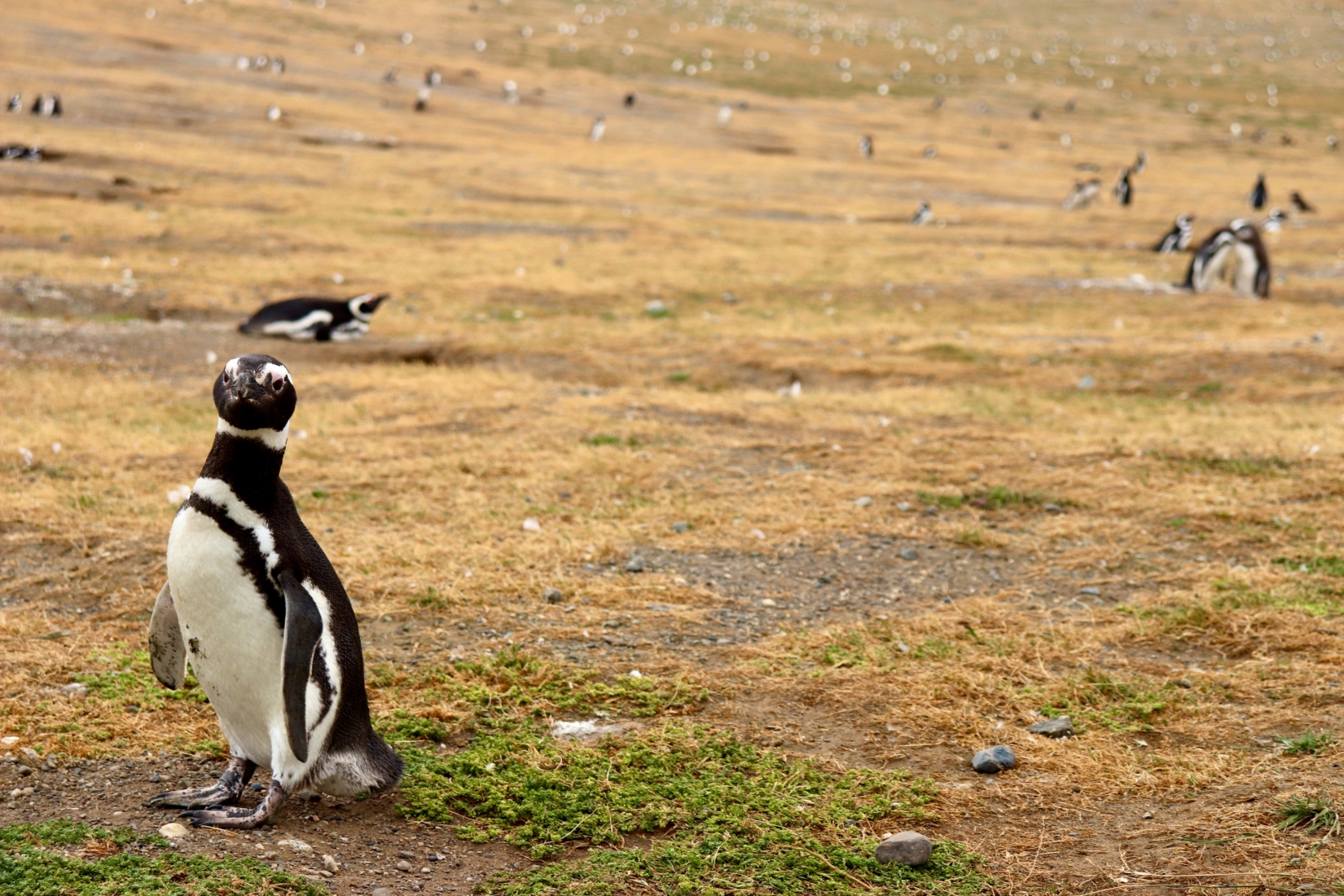
- Puerto Madryn – One part industrial and one part wild, Puerto Madryn is the entry point to the legendary Península Valdés. That’s the area you’ll want to focus on while touring Argentine Patagonia, particularly in the months between June and January, when the southern right whales pass through en masse, attracting many tourists to travel to Patagonia. Even without the cetaceans, it’s a pretty epic region dotted with pink-tinged salt pans and beset by primeval steppe.
Make sure to stop in these villages and cities for a multifaceted trip that is sure to excite.
Must-see attractions in Argentinian Patagonia
It’s easy to see why Argentinian Patagonia can be a favorite on an outdoorsy, adventure seeker’s list of top destinations. The sights and activities are largely majestic jagged peaks and scenic hikes on the trails that weave around them. Plus, the penguin and whale spotting is not to be missed.
Plan to see these popular attractions when you go:
- Fitz Roy – Cerro Fitz Roy spikes the skies to the west of El Chaltén town, heralding arguably the most iconic mountain massif in South America, drawing in lots of tourists to Argentine Patagonia. It’s almost impossible to believe it’s real, what with pinnacle after pinnacle of granite monolith lurching straight from the edge of a gleaming glacier. Conquering the top on your Patagonia trek is a serious mountaineering undertaking. Most trekkers stick to viewpoints around the Laguna de los Tres just below (more on that later).
- Perito Moreno Glacier – Set at an opening in the Andes some 50 miles (80.5 km) to the west of El Calafate in southern Patagonia, the Perito Moreno Glacier has been wowing travelers for decades. Covering nearly 100 square miles (259 sq km) of a wide valley in the Los Glaciares National Park, it’s arguably the best place in the world to see the process of calving (when glaciers fragment into icebergs where they meet the water).
You can also hike right on top of the Perito Moreno Glacier. Choose between mini trekking options to sample crampon trekking, or go for the Big Ice adventure – a challenging hike lasting 12 hours that takes you across much more of the glacier surface. Hiking the Perito Moreno Glacier is sure to be an awe-inspiring experience for any travelers visiting Argentine Patagonia.
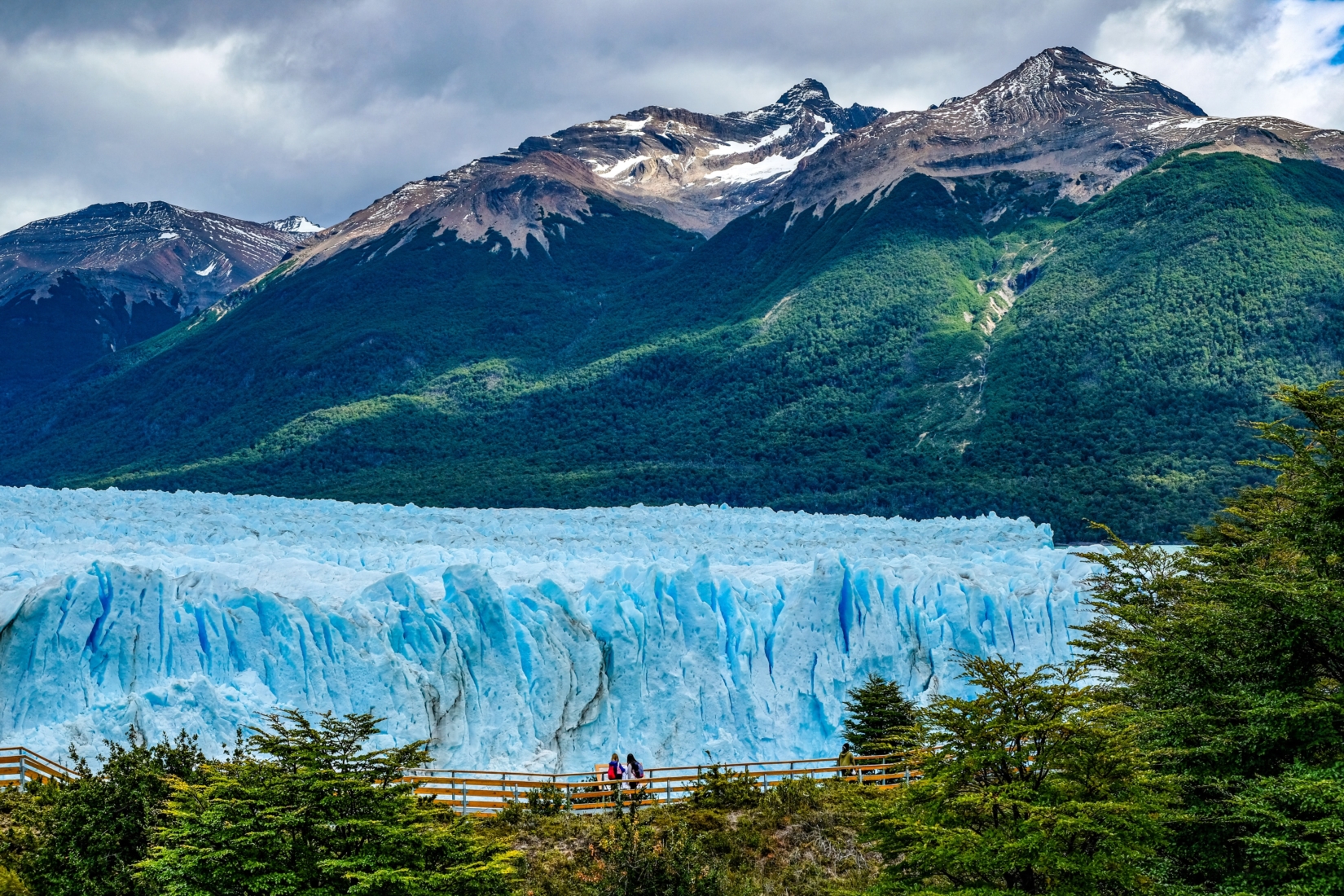
- Tierra del Fuego – Tierra del Fuego is where the end of South America fragments into the Atlantic Ocean at the tip of Patagonia. Like so many parts of this region, it’s shared between Chile and Argentina, but it’s the latter that has the main base: Ushuaia, the southernmost city in the world, that we covered above. Tierra del Fuego visitors will often start the day with a hike to the scenic Glacier Martial and then venture out by water to spot Gentoo penguins and sea lions on the Beagle Channel and beyond.
- Whale watching – Argentinian Patagonia actually has some of the finest whale watching on the continent. That’s despite the fact that there’s really only one destination that has the infrastructure and natural gifts for it. You’re looking for the duo of Puerto Madryn and the whole Península Valdés. The main species to spot are southern right whales and orcas, along with all manner of dolphins and penguins. The best time to visit Patagonia for whale watching is between June and December.
- Trekking – Last but most certainly not least, the trekking. Argentinian Patagonia can rival even the mighty Himalaya on this front. There are treks of all shapes and sizes, levels, and styles fit for anyone. We’ll take a look at the most famous Patagonia treks in just a moment but suffice to say that there are routes that let you get up close and personal with jagged mountains like the Fitz Roy and others that let you tread on colossal glaciers such as the famous Perito Moreno Glacier.
Spring and summer are generally considered the best time to travel to Patagonia if you wish to hit the trails, as many of the routes close completely due to snowfall during the other seasons.
If you’re interested in hiking Torres del Paine on the Chilean side of Patagonia, check out our 19 Things to Know Before Hiking the W Trek.
Top hikes in Argentinian Patagonia
A 1,000-mile (1,069-km) string of the Andes bisects the whole of Patagonia, delineating much of the border between Chile and Argentina. But Argentina gets the eastern section of the mountains, which is generally considered to be the premier trekking part. It’s where you can tread on epic trails, such as:
- Laguna de los Tres – The Laguna de los Tres is the piece de resistance of El Chaltén, the trekking capital of the country. It begins in the town itself, then passes through woods of fire trees and barberry bushes, then emerges onto exposed slopes with a steep ascent onto a glacier-carved moraine. That’s where the glimmering waters of the Laguna de los Tres unfold, right beneath the hulking granite spires of the Fitz Roy. There’s really no better viewpoint around. Sunrise hikes in Patagonia are extra special since you see the peaks glow radiant pinks and reds in the first rays of the day.
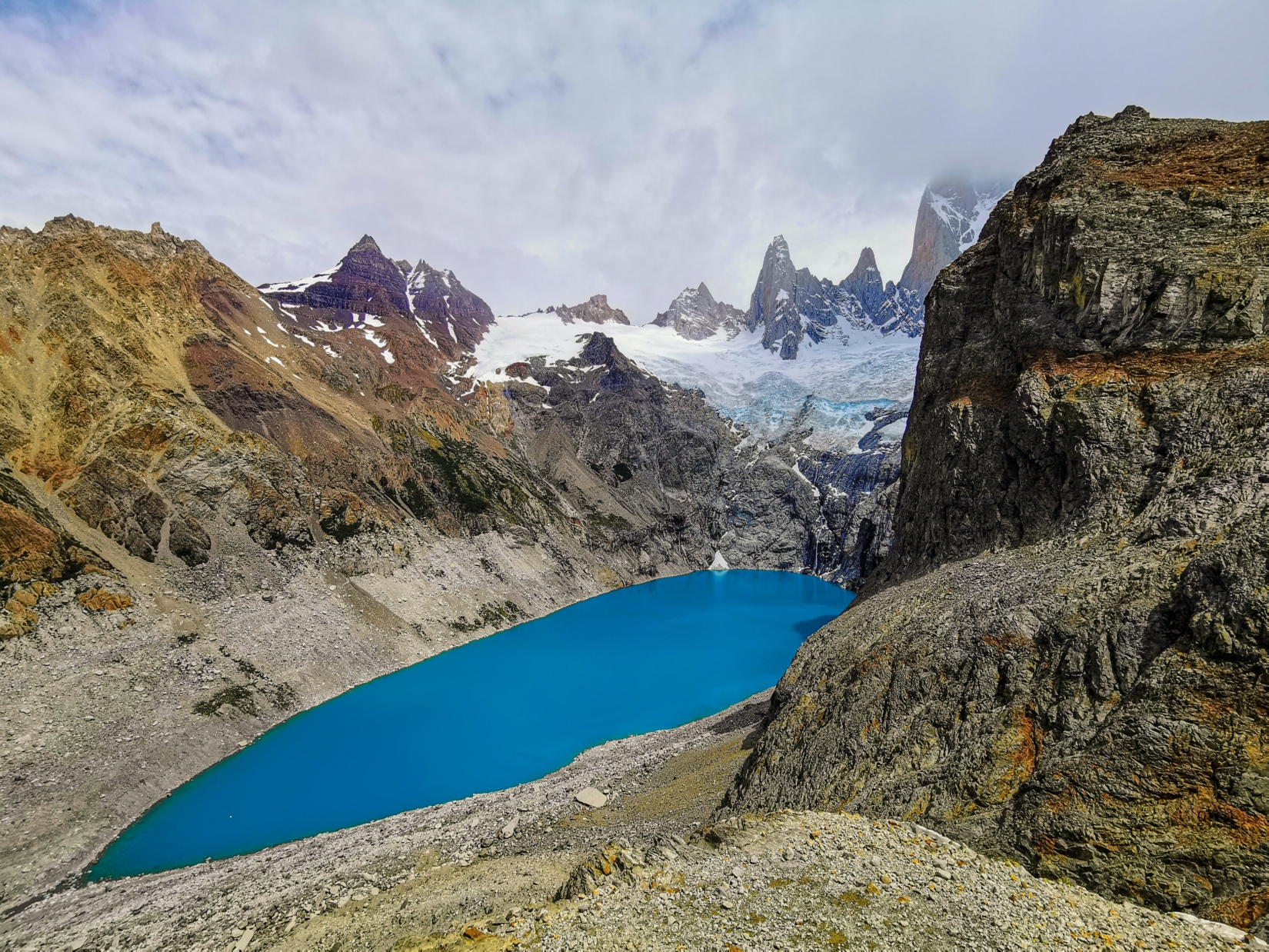
- Laguna Torre – A 9-hour hike through the valley behind the Fitz Roy massif can bring you into the domain of the Laguna Torre. It’s a needle-like stack of stone that’s considered one of the hardest climbing feats in the world. You won’t be harnessing up to do that, but the journey there offers sublime views of the Grande Glacier and an inky mountain lake framed by the summit itself. A good option is to stay in the backcountry campground – that will let you complete the hike at sunrise, when the Laguna Torre peak looks, simply, stunning.
- Big Ice – Helping you scratch a line from the bucket list, the Big Ice tour is a trek actually on top of the Perito Moreno Glacier. There are shorter options known as mini treks, but this is the true expedition for exploring the nooks and crannies of the creaking ice field as it cascades down from the heights of Cerro Pietrobelli. Days start with a hike along a tough moraine before you cross to the glacier itself to see, firsthand, pristine ice caves and crevasses cut into the surface all throughout your hike in Patagonia.
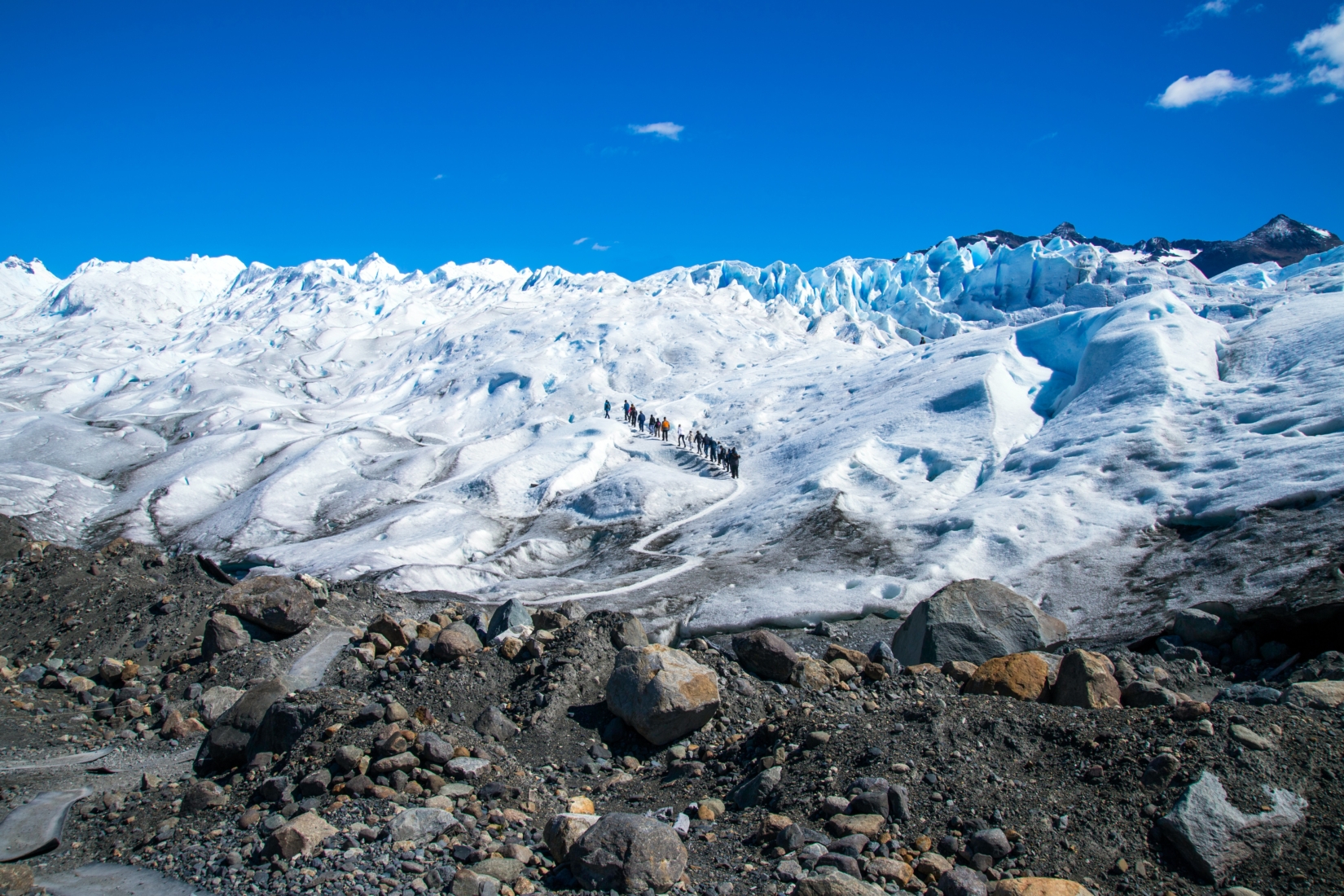
- Huemul Circuit – If you’re all about spying the vast white plains of the Southern Patagonian Ice Field, then there’s no better hike than the Huemul Circuit. It’s 4 days and 40 miles (64 km) of dramatic, high-altitude scenery in the depths of the Los Glaciares west of El Chaltén. This hike is a challenge, requiring river fording, use of a Tyrolean traverse, and 3,000-foot (91 m) ascents in a single day. Highlights along this hike in Patagonia include the Paso del Viento, a wind-blasted pass under Cerro Huemul, and sections along sky-blue Viedma Lake.
- Pliegue Tumbado – This Patagonia hike, taking you ever higher and higher from a starting point in a local visitors’ center to the Pliegue Tumbado plateau, is all about gaining a vantage point to survey El Chaltén’s unrivaled little crevice in the Andes. This hike is highly exposed and usually windy in the dominant summer westerlies. At 4,900 feet (1,494 m) up, you’ll gain a ridge that takes in the Fitz Roy to the north and glacier-draped Mount Huemul to the west.
This trip guide is just a taste of what you’ll experience on a remarkable visit to Argentine Patagonia. If you have more questions on visiting Argentinian Patagonia or need help planning your trip, let’s connect! Our knowledgeable Adventure Consultants would love to hear from you so contact us and let us show you what’s possible.
Why travel with The Explorer’s Passage?
We pride ourselves on delivering extraordinary tours based on travelers’ needs and are humbled by our guests’ testimonials. In fact, our dedication has earned us a 5-star rating on Tripadvisor, and awards by Travel+Leisure Magazine and Newsweek. Check us out and discover why so many travelers worldwide choose us. My team and I would love for you to join us in Argentine Patagonia or or any of our many other adventure trips!
Cheers,
Jeff
Jeff Bonaldi
Founder & CEO
The Explorer’s Passage
About Jeff Bonaldi
Jeff Bonaldi is the Founder and CEO of The Explorer’s Passage, a premier adventure travel company. His mission is to provide travelers with the opportunity to transform their lives and the planet through the power of adventure.
Learn more about Jeff’s story and his company HERE.


